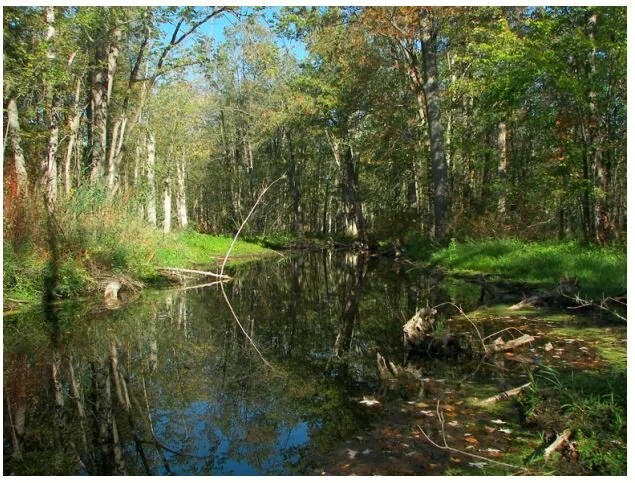Relocating natural features for development
Relocating natural features for development
The Hamilton Conservation Authority is asking for public comments on a draft “offsetting” policy that would allow relocation of wetlands and other natural heritage features to make way for development. This may revive the dispute over the proposal to relocate a wetland and stream segment in the headwaters of Ancaster Creek that was rejected earlier this month by the HCA Board.
The official reason for that rejection was that the relocations were against HCA policies, so a new policy that allows such moves could revive that development application. Indeed, the drafting of the offsetting policy now being circulated for comment is a direct result of the same developer proposal. When that application was first presented to the HCA last fall, its board voted 9-2 to direct their staff to write an offsetting policy.
The fact that the Board request for the policy was not a unanimous decision is not mentioned, nor is there a way for the reader to connect the policy to the controversy over moving the Ancaster wetland and stream segment. The surprise rejection of that permit suggests the HCA board may no longer still be willing to endorse an offsetting policy, but calling for its rejection is not offered as an option in the consultation process now underway.
“Biodiversity offsetting”, explains the draft policy, “entails a trade-off: accepting harm on the condition that it is counterbalanced by beneficial actions so that in the end nature is no worse off – or ideally even better off”.
At present the HCA does not permit offsetting for wetlands or other ecological features. It is only allowed in three of the other 35 Conservation Authorities in defined circumstances and only as a “last resort”.
The Ford government has reduced the powers of Conservation Authorities especially in relation to Ministerial Zoning Orders (MZOs) where the provincial minister of municipal affairs overrides all approval processes and public consultation. Where the MZO applies to a protected natural feature, the relevant Conservation Authority can ask for ecological compensation, although the final decision rests with the provincial cabinet.
The draft policy put together by HCA staff notes that offsetting is not contemplated in the official plan of the City of Hamilton nor in the Provincial Policy Statement that governs planning decisions across Ontario. On the contrary, “provincial and local planning objectives for the Natural Heritage System focus on protecting, and restoring these features and natural functions as a permanent resource for the community.”
It cites an Ontario Nature review that says “some sites, features and habitats should be off-limits to offsetting, based for example on vulnerability and irreplaceability. The ‘no-go’ criteria should be informed by science and Aboriginal traditional knowledge.”
However, the draft policy offers no recommendations on the involvement of Indigenous Nations in decisions to relocate wetlands, streams or other ecological features. The HCA has accommodated an annual Haudenosaunee deer harvest on Conservation Authority lands for the last decade.
The draft policy also makes no reference to the climate emergency. Wetlands, watercourses and forested areas are now recognized as important carbon sinks, and also play key roles in reducing flooding and moderating heating associated with increasingly extreme weather events.
The Hamilton 350 Committee will devote its July 22 Conservation Matters monthly webinar to an examination of the draft HCA offsetting policy. Public input can be submitted until the end of July. Decisions on its adoption or final form are scheduled for September.



